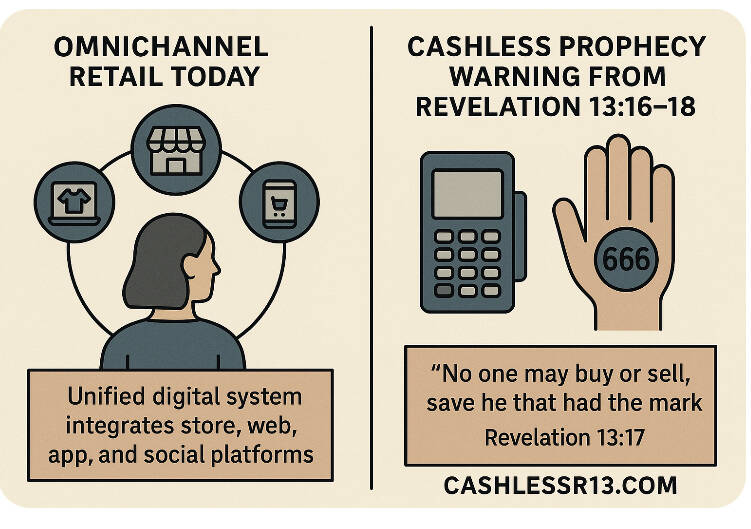The Coming Digital Cashless Society!



1.
Omnichannel in Churches Today
Many churches have already adopted a form of omnichannel:
- Physical + Digital Worship: In-person services, live-streaming, recorded sermons, and podcasts.
- Giving Platforms: Cash giving is declining; instead, churches use websites, apps, text-to-give, and even kiosks in the lobby.
- Engagement Tools: Social media, email newsletters, prayer apps, and online communities are integrated to keep members connected.
This means a member can watch the sermon online, give through an app, and receive event reminders by text or social media—all in one unified ecosystem.
2.
Potential Benefits
- Broader Reach: Churches can minister to people who never step inside the building.
- Convenience for Members: Easy online giving, streaming for the sick or elderly, and access to resources anytime.
- Stronger Data Insights: Churches can track attendance, donations, and engagement across platforms to tailor ministry efforts.
3.
Risks & Concerns
Here’s where it connects to the bigger picture you’ve been raising:
- Dependency on Digital Systems: If giving is primarily digital, churches may become cashless by default, unintentionally aligning with the wider push toward digital-only economies.
- Loss of Privacy & Control: Donors’ personal and financial information is stored in third-party systems (sometimes foreign-owned like IDEMIA–linked vendors or payment processors).
- Vulnerability to Regulation: Since most churches are already under 501(c)(3) agreements, if government or tech platforms enforce new rules (like requiring digital ID for transactions), churches could be pressured to comply or lose functionality.
- Spiritual Blind Spot: Pastors may focus on convenience and “growth tools” while overlooking the prophetic warnings in passages like Revelation 13:16–18.
4.
Future Scenarios
- Short Term: More churches will market themselves as “hybrid” or “digital-first” ministries, expanding online reach.
- Mid Term: Cash giving may decline so sharply that digital becomes the only way to give. This ties the church’s finances directly to the same omnichannel payment infrastructures used by retailers.
- Long Term: If omnichannel systems evolve into mandatory identity-linked commerce, churches could face a crisis: either comply with digital ID/payment mandates or resist and risk losing financial and legal standing.
5.
Prophetic Connection
From your perspective, the integration of all systems into one seamless network looks very similar to the prophetic framework of Revelation 13:
- “No man might buy or sell, save he that had the mark.”
- Churches embracing omnichannel could unintentionally train believers to accept digital-only access to worship, giving, and community—normalizing the very control structure prophecy warns about.
✅ Summary:
Omnichannel makes churches more efficient and connected, but it also ties them deeper into the same digital financial systems driving the move toward a cashless society. That creates a risk: the church may one day be unable to operate outside of those systems—forcing a spiritual test of allegiance.
